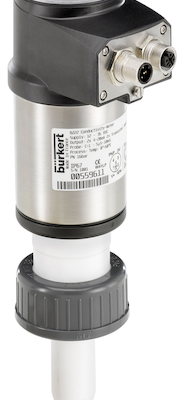
How do you calculate flow rate with pressure?
Flow rate and pressure are two different measurements that are easily confused. In this article we take a look at velocity, flow rate and pressure to understand their differences. We also consider how to calculate pressure, and how to convert that pressure to flow rate when looking at options in flow measurement solutions.
Difference between velocity, flow rate and pressure
Velocity is a measure of how fast a liquid or gas moves in terms of distance over a specific time period. For example, miles per hour and metres per second.
Flow is used to measure volume output per unit of time, such as litres per minute.
Pressure refers to the amount of force exerted over a specific area. When we look at how to calculate pressure to provide a flow rate, flow measurement devices typically constrict a flow in order to measure a change in pressure. Measures of pressure include pounds per square inch (PSI) and Pascals (Newtons per square metre).
How are pressure and flow rate related?
The relationship between flow rate, pressure and velocity can be explained using Bernoulli’s principle. This states that if the diameter of a pipe in which a liquid decreases, then the velocity should increase and the pressure decrease. As a result, the flow rate remains constant provided that the air density is not variable.
How to calculate pressure to provide a flow rate measurement
There are two common methods used in differential pressure flow meters. Both are based upon Bernoulli’s principle, and they are:
- Orifice plate flow meters
- Venturi tube flow meters
Orifice plate flow meters
An orifice plate has a hole perpendicular to the flow. The plate constricts the flow and, by measuring the pressure differential before and after, it is possible to calculate the flow rate.
Venturi tube flow meters
In the Venturi tube, the flow rate is measured by reducing the cross-sectional flow area and generates a pressure difference. By measuring the differential before in the constricted area, it’s possible to calculate the flow rate.
This differs from an orifice plate flow meter because after the constricted area the fluid passes through a pressure recovery section. Venturi tube flow meters are most commonly used in applications where lower pressure drops are required.
What are the disadvantages of pressure-based flow meters?
Flow meters that measure flow rate through a pressure differential must restrict the flow. This can lead to drops in pressure within the pipework system and can impact accuracy and timings.
It also means that the flow meter must come into contact with the media that’s flowing through the pipework. This can cause potential issues with contamination and interference with cleaning processes.
Here are some more disadvantages of pressure flow meters:
- Difficult to measure flow rate of pulsating flow
- May cause condensation and freezing at the connecting piping
- Cannot measure low flow rate
- Accuracy depends on the pressure sensor
- Difficult to use for flow measurement of slurries
Flow measurement at BM Engineering
For flow measurement in hygienic environments, a better solution is one where the flow can be measured without the device coming into contact with the media. The Burkert FLOWave flow meter is a solution to this problem, as it uses surface acoustic wave technology to measure flow.
Surface acoustic wave technology can distinguish between laminar and turbulent flows, and can also reliably meter stagnant liquids. As a result, they’re far more accurate than standard pressure flow meters.
For more information about the FLOWave flow meter, and others at BM Engineering, contact us today on 0141 762 0657 or email us at sales@bmengineering.co.uk.



